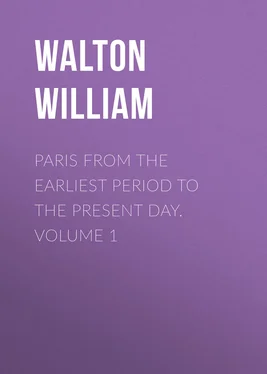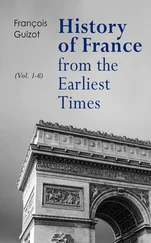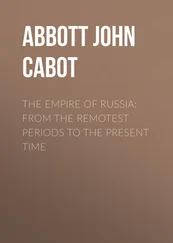William Walton - Paris from the Earliest Period to the Present Day. Volume 1
Здесь есть возможность читать онлайн «William Walton - Paris from the Earliest Period to the Present Day. Volume 1» — ознакомительный отрывок электронной книги совершенно бесплатно, а после прочтения отрывка купить полную версию. В некоторых случаях можно слушать аудио, скачать через торрент в формате fb2 и присутствует краткое содержание. Жанр: Путешествия и география, История, foreign_edu, foreign_antique, foreign_prose, на английском языке. Описание произведения, (предисловие) а так же отзывы посетителей доступны на портале библиотеки ЛибКат.
- Название:Paris from the Earliest Period to the Present Day. Volume 1
- Автор:
- Жанр:
- Год:неизвестен
- ISBN:нет данных
- Рейтинг книги:5 / 5. Голосов: 1
-
Избранное:Добавить в избранное
- Отзывы:
-
Ваша оценка:
- 100
- 1
- 2
- 3
- 4
- 5
Paris from the Earliest Period to the Present Day. Volume 1: краткое содержание, описание и аннотация
Предлагаем к чтению аннотацию, описание, краткое содержание или предисловие (зависит от того, что написал сам автор книги «Paris from the Earliest Period to the Present Day. Volume 1»). Если вы не нашли необходимую информацию о книге — напишите в комментариях, мы постараемся отыскать её.
Paris from the Earliest Period to the Present Day. Volume 1 — читать онлайн ознакомительный отрывок
Ниже представлен текст книги, разбитый по страницам. Система сохранения места последней прочитанной страницы, позволяет с удобством читать онлайн бесплатно книгу «Paris from the Earliest Period to the Present Day. Volume 1», без необходимости каждый раз заново искать на чём Вы остановились. Поставьте закладку, и сможете в любой момент перейти на страницу, на которой закончили чтение.
Интервал:
Закладка:
Lutetia, of which the modern French make Lutèce, is supposed to have been derived from the Celtic louk-teih , which signified the place of morasses; and the name of the Parisii from the Celtic par , a species of boat, and gwys , in composition ys , man, whence parys , boatmen,—these islanders being supposed to have been skilful navigators. But they are said to have called themselves Loutouchezi ,—that is to say, a residence in the midst of the waters. Other etymologists cast doubts upon all these deductions, and the matter is not very important. The early Parisians were one of the smallest of the Gaulish tribes, and preferred the islands to the mainland as a safer place of residence; they were surrounded by the Carnutes, Senones, and other, stronger people whose names have not been perpetuated. Of their ten islands and sand-banks, which were preserved until late in the Middle Ages, there are now only two remaining, the Ile Saint-Louis and Ile de la Cité. The ancient town, like the modern one, lay in the centre of a "tertiary" basin, about sixty-five mètres, or two hundred and ten feet, above the level of the sea, broken here and there by low hills. The modern historian, Duruy, quotes Strabo as finding a proof of divine providence in the fortunate configuration of the soil of Gaul; and that writer testifies that the whole country was inhabited, even in the marshes and woods. "The cause of this is, however, rather a dense population than the industry of the inhabitants. For the women there are both very prolific and excellent nurses, while the men devote themselves rather to war than to husbandry."
The antiquity of the inhabitants of Gaul is now pushed back by the learned far beyond the days of Cæsar. M. A. Thieullen, in two communications addressed to the Société d'anthropologie at Paris (January and February, 1898), maintained that the chipped flint arrow-heads found at Chelles and Saint-Acheul, which have been considered as the earliest works of prehistoric man, are, in reality, in common with the polished stone hatchets of the Neolithic age, the products of an industry in a high state of development, the result of successive essays by numberless generations. In this theory he is supported by other scientists, among them the English geologist, Prestwich; and in this insistence upon the artistic quality of the chipped and polished flints and the prodigious number of rudimentary utensils which have preceded and accompanied them is found another argument in favor of the great antiquity of man and his existence in the tertiary period. The soil of Paris has furnished many of these superior flints, and the comparative state of civilization to which the locality early attained is further testified to by the discovery, in the early months of this year, 1898, by an enterprising proprietor on the edge of the forest of Fontainebleau, of the site of a prehistoric pottery on his grounds. This locality, opposite the village of Ecuelle, was already noted for the menhir, or prehistoric upright stone, standing on the right bank of the canal. The ancient potteries seem to have occupied a space about five hundred mètres in length and two hundred in width; at the depth of sixty-five or seventy centimètres below the surface there is found "a black sand, burned, beaten down, trodden, which gives forth a resonant sound when attacked by the pick-axe; this arises from the fact that it has been, through a long series of centuries, tormented by the incessant passage of men and the innumerable fires of the furnaces." From the specimens of pottery extracted from this sand, it is concluded that this manufactory had been maintained from the Neolithic age down to the Gallo-Roman period. In the little village of La Mouthe, in the department of the Dordogne, farther south, have been discovered within the last few years, in a cavern, very curious and not unskilful outline drawings on the rock, sometimes touched up with color, of now extinct animals,—the extreme age of these works of art being demonstrated by the fact that they are in many cases partially covered with stalactites. The learned scientists who have uncovered and photographed these incised drawings conclude, from their appearance and from the fragments of animals' bones found in the cavern, that they are the work of men of the Neolithic age and the Palæolithic, which preceded it. In short, there is every reason to believe, on the strength of all the testimony which modern science has wrested from the unwilling records of the past, that the earliest inhabitants of the islands of the Seine were contemporary with the mammoth, the cave-bear, the auroch, and the rhinoceros with cleft nostrils.
It is not to be supposed, however, that these very ancient texts are read without the necessary stumbling over obscure passages and much upsetting of cherished historical truth. The finest presentations of ancient records that we find in grave historians are now set aside by learned archæologists in communications to the Académie des Sciences à Paris or the Académie des Inscriptions et Belles-Lettres . Even the original number of islands in the Seine and Cæsar's statements concerning the Gauls and their manners and customs are now disputed. When it comes to the origin of things and of peoples, the erudition is profound. M. G. de Mortillet proposes for the epoch quaternaire or pléistocène four successive divisions,—in their order of antiquity, the Chelléen , the Moustérien , the Solutréen , and the Magdalénien ; M. Perrier du Carne thinks that the traces of the Solutré and of the Madeleine show them to have been derived from two races long contemporary on the same soil, of which the former were autochthonous and the latter, immigrants, who came in with the reindeer and followed him when he retreated northward. M. Piette objects to the word Magdalénien , and proposes to replace it by glyptique , for, during this period, man learned to carve bones with flint instruments; after the Solutré he places the epoch Eburnéenne , and after that, the Tarandienne , characterized by instruments in reindeer's horns. After the quaternary period, Professor Alexandre Bertrand, of the École du Louvre, places the Mégalithiques , whom he thinks belonged to the great ethnological family of the Touranians which preceded the Aryans in Europe, and who erected the great stone monuments, dolmens, menhirs, cromlechs, etc., formerly called druidical, found in various parts of Europe. Several of these monuments mégalithiques have been discovered in Paris and its environs,—a street of the Faubourg du Temple owes its name of Pierre-Levée (raised stone) to the fact that at its opening, in 1782, an enormous ancient rock was found artificially supported on two others, the funerary tumulus, or mound, which formerly covered it having disappeared.
As it is impossible to attribute any longer these prehistoric monuments to the "Celts," or to "their priests, the Druids," so do others of our historical illusions vanish. M. Duruy, in his learned Histoire de France , states that at the dawn of history the country known as Gaul was "divided between three or four hundred tribes ( peuplades ) belonging to the three great families,—the Celts, the Iberians, and the Belgians." M. Guizot says that "in the south were Iberians or Aquitanians, Phœnicians and Greeks; in the north and northwest, Kymrians or Belgians; everywhere else, Gauls or Celts, the most numerous settlers, who had the honor of giving their name to the country." M. Salomon Reinach, in his detailed description of the monuments in the Museum of Saint-Germain-en-Laye, under the general title of Antiquités nationales , declines to recognize the race celtique ; in accord with the science of anthropology he distinguishes various Gaulish types and is aware that they nowhere present themselves in a pure state. Professor Bertrand "superposes" upon his Mégalithiques , whose distinguishing trait in Europe is their use of polished stone, another race, numerically inferior and much less ancient; these are the " tribus celtiques or celtisées of the Aryan race." When they arrived in Gaul, they were already familiar with the use of metals, especially bronze, beginning to be acquainted with iron; they were pastoral and agricultural, and burned their dead. About the sixth century B.C. appeared a third group, the tribus galatiques , Helvetians, Kymrians, Belgians; they were wandering bands of warriors, who used iron implements only and buried their dead. "From the superposition, rather than from the fusion, of these divers elements has resulted that which is called la nation gauloise or celtique ."
Читать дальшеИнтервал:
Закладка:
Похожие книги на «Paris from the Earliest Period to the Present Day. Volume 1»
Представляем Вашему вниманию похожие книги на «Paris from the Earliest Period to the Present Day. Volume 1» списком для выбора. Мы отобрали схожую по названию и смыслу литературу в надежде предоставить читателям больше вариантов отыскать новые, интересные, ещё непрочитанные произведения.
Обсуждение, отзывы о книге «Paris from the Earliest Period to the Present Day. Volume 1» и просто собственные мнения читателей. Оставьте ваши комментарии, напишите, что Вы думаете о произведении, его смысле или главных героях. Укажите что конкретно понравилось, а что нет, и почему Вы так считаете.












